Filtrer par
27
résultats
Rappel de recherche : Lieu : Bénin
Modifier les filtres
Exporter les résultats sélectionnés
Sélectionner tous les résultats de la page

-
Notice détaillée
Titre : Exploration du DahomeyExtrait de : Les colonies françaises: petite encyclopédie coloniale. Tome premier, Introduction, Principes d'organisation coloniale, Algérie, Tunisie, Sahara, Sénégal, Guinée, Côte d'Ivoire, Dahomey : 247 gravures, 24 cartesType : Image - Carte, planConditions d'utilisation : Domaine public

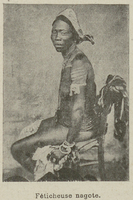
-
Notice détaillée
Titre : Féticheuse nagote.Extrait de : Les colonies françaises: petite encyclopédie coloniale. Tome premier, Introduction, Principes d'organisation coloniale, Algérie, Tunisie, Sahara, Sénégal, Guinée, Côte d'Ivoire, Dahomey : 247 gravures, 24 cartesType : Image - PhotographieConditions d'utilisation : Domaine public

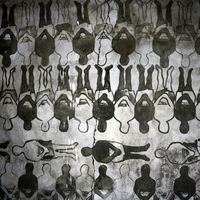
-
Notice détaillée
Titre : GRAFFITI in Da Silva Museum of Arts and culture, Porto Novo, Benin.Auteur : Lo Calzo, Nicola (1979-....)Lieu de la prise de vue : BéninExtrait de : Cham, la mémoire vivanteType : Photographie - Noir et blancDescription : Although, according to Urban-Karim-Elisio da Silva’s story, he was a descendant of a slave trader, on his father’s side, he rather identifies himself as a descendant of a slave, through his mother’s family, Paraiso. In his case, being the descendant of a slave becomes a source of pride and generates a political capital, in order to increase the legitimacy of his museum. Porto Novo, BeninConditions d'utilisation : CC-BY-NC-ND - Attribution - Pas d'utilisation commerciale - Pas de modificationProvenance : Université des Antilles

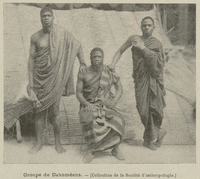
-
Notice détaillée
Titre : Groupe de Dahoméens.Extrait de : Les colonies françaises: petite encyclopédie coloniale. Tome premier, Introduction, Principes d'organisation coloniale, Algérie, Tunisie, Sahara, Sénégal, Guinée, Côte d'Ivoire, Dahomey : 247 gravures, 24 cartesType : Image - PhotographieConditions d'utilisation : Domaine public

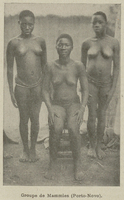
-
Notice détaillée
Titre : Groupe de Mammies (Porto-Novo).Extrait de : Les colonies françaises: petite encyclopédie coloniale. Tome premier, Introduction, Principes d'organisation coloniale, Algérie, Tunisie, Sahara, Sénégal, Guinée, Côte d'Ivoire, Dahomey : 247 gravures, 24 cartesType : Image - PhotographieConditions d'utilisation : Domaine public

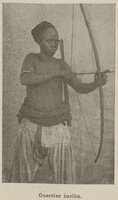
-
Notice détaillée
Titre : Guerrier bariba.Extrait de : Les colonies françaises: petite encyclopédie coloniale. Tome premier, Introduction, Principes d'organisation coloniale, Algérie, Tunisie, Sahara, Sénégal, Guinée, Côte d'Ivoire, Dahomey : 247 gravures, 24 cartesType : Image - PhotographieConditions d'utilisation : Domaine public


-
Notice détaillée
Titre : Général Dodds, né en 1842.Extrait de : Les colonies françaises: petite encyclopédie coloniale. Tome premier, Introduction, Principes d'organisation coloniale, Algérie, Tunisie, Sahara, Sénégal, Guinée, Côte d'Ivoire, Dahomey : 247 gravures, 24 cartesType : Image - PhotographieDescription : Dodds, Alfred-Amédée (1842-1922). Commandant supérieur des troupes françaises au Sénégal à partir de 1890. Conquiert le Dahomey (actuel Bénin) sur Behanzin (1892-1894)Mots-clés : Administrateur colonial - Administration coloniale - Portrait - Bénin - France - 19e siècleConditions d'utilisation : Domaine public

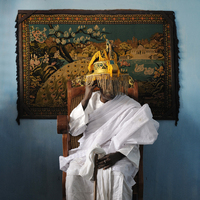
-
Notice détaillée
Titre : His majesty MITO DAHO KPASSÈNON, king of Ouidah and supreme head of the voodoo cult, sitting in the Audience hall, Royal Palace.Auteur : Lo Calzo, Nicola (1979-....)Lieu de la prise de vue : BéninExtrait de : Cham, la mémoire vivanteType : Photographie - CouleurDescription : Mito Daho Kpassenon is a member of one of the oldest families of Benin, heir and descendant of King Kpassé, the first one to make business with the Europeans, particularly through the slave trade, when the Portuguese arrived in the Benin Bay around 1580. “According to the oral tradition, KPaté, one of the king’s servants, was fishing crabs on the shore when he saw white people on the beach. He took them to King KPASSE, and from that day they started trading,” tells King Kpassenon. In the early 1990s, relying on the cultural and religious exchanges established during the period of the Atlantic slave trade, and in parallel with the debates aimed at developing the Slave Route Project, he joined the project “Ouidah 92”, the world festival of voodoo culture. Like the president Songlo, by promoting the Vodun religion and the exchanges between Africa and the Americas, he presented slavery and the Atlantic slave trade not as a rupture between generations, families, and traditions but as events that produced continuity across the Atlantic. Ouidah, Benin.Conditions d'utilisation : CC-BY-NC-ND - Attribution - Pas d'utilisation commerciale - Pas de modificationProvenance : Université des Antilles

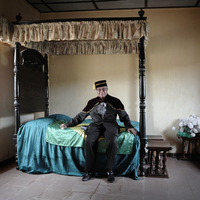
-
Notice détaillée
Titre : Honorè Feliciano DE SOUZA, CHACHA VIII in the memorial of Chacha I, Ouidah.Auteur : Lo Calzo, Nicola (1979-....)Lieu de la prise de vue : BéninExtrait de : Cham, la mémoire vivanteType : Photographie - CouleurDescription : Honore Feliciano de Souza is the current head of the Aguda community and the direct heir of Don Francisco Felix de Souza, Chacha I (1754-1848), the foremost middle-men in the slave trade between the Kingdom of Dahomey and the Europeans, early XIXth century. To honor their ancestor, the family has a memorial in Singbomey, with the tomb of Chacha I. This memorial existed for many years, but became accessible to the public only in the 1990s. Paradoxically, slavery heritage official projects also helped to promote the memory of the slave merchant Francisco Felix de Souza. According to Honore Feliciano‘s unlikely opinion, “the Chacha was not involved in such a slave trade as this. At the time when the Kingdom of Dahomey was killing people, he preferred to take them to Brazil to make them work. He was in fact saving people and that is the reason why today there is some admiration for him,” he says. “Nowadays, no one would want to be a Chacha. Being Chacha is facing many hardships. I haven’t chosen to be one. On October 1995, everyone gathered here and I was appointed Chacha VIII, I cried that day. It’s a life-long mandate.” Ouidah, Benin.Conditions d'utilisation : CC-BY-NC-ND - Attribution - Pas d'utilisation commerciale - Pas de modificationProvenance : Université des Antilles


-
Notice détaillée
Titre : La Martinique et la Guadeloupe, terres d'immigration et d'émigrationIntervenant principal : Calmont, André (19..-....) , Dubost, Isabelle (19..-....) , Giraud, Michel , Milia-Marie-Luce, Monique , Sylaire, RudolfIntervenant secondaire : Amra, Widad (1949-....)Edition : Université des Antilles et de la Guyane. UFR des Lettres et sciences humaines, Université des Antilles et de la Guyane (1982-2015), Centre de recherche sur les pouvoirs locaux dans la Caraïbe (Schoelcher, Martinique)Lieu : SchœlcherDate : 20 octobre 2011Extrait de : Les jeudis de l'Université [des Antilles et de la Guyane]Type : Vidéo - Colloque & conférenceRésumé : Les jeudis de l'Université nous propose quatre communications portant sur le thème de l'immigration et de l'émigration en Martinique et en Guadeloupe. L'historienne Monique Milia Marie-Luce nous présente : "L'engagement aux Antilles au regard du droit et de l'histoire". Le sociologue Michel Giraud : "L'émigration antillaise: partir, mourir (un peu), renaître (peut-être)". André Calmont, "L'immigration africaine et haïtienne", et Isabelle Dubost : "Entre nécessité et chimère, les "Chinois" et les "Syriens" à la Martinique". Un récit familial mis en scène par Rudolf Sylaire intitulé "L'immigration se raconte" illustre ces communications.Langue : FrançaisMots-clés : Bumidom - Colonisation - Commerce - Diasporas - Discrimination - Engagisme - Esclavage - Iconographie - Identité collective - Insertion - Intégration - Migration - Peuplement - Émigration et immigration - Science politique - Économie, Gestion - Antilles Françaises - Bénin - Cameroun - Chine - Congo Belge - Côte d’Ivoire - France - Guadeloupe - Haïti - Liban - Martinique - Palestine - Sénégal - 19e siècle - 20e siècleConditions d'utilisation : CC-BY-NC-ND - Attribution - Pas d'utilisation commerciale - Pas de modificationProvenance : Université des Antilles et de la Guyane

Save search
Recherche
25366 documents en libre accès